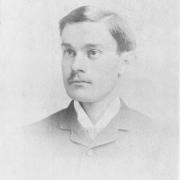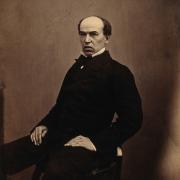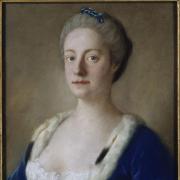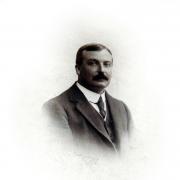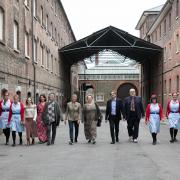They were petty Kent criminals, sentenced to transportation to New South Wales, who became ‘Australian royalty’ as part of the ‘First Fleet’ | Words: John Wright

Two hundred years ago, life was very unbalanced between the rich and poor, many of the latter group having to steal to keep their families in food.
By the late 1700s crime in Britain was rife. Jails were filling up and the empire-building authorities cottoned on to the idea that they could not only empty their prisons but also populate a new colony, which Captain Cook had claimed for Britain during his 1770 voyage to the Pacific.
On 6 December 1785 orders were issued for a penal colony to be set up in New South Wales.
On 13 May 1787 the so-called ‘First Fleet’ of 11 ships, carrying the first batch of 1,400 convicts – those sentenced at their trials to transportation instead of imprisonment – left Portsmouth bound for Botany Bay.
It is not known how many convicts Kent provided of the 136,000 men and 25,000 women transported to Australia in the 80 years since the First Fleet left Portsmouth in May 1787.
One we do know of, however, was 18-year-old labourer James Richardson who faced Kent’s Lent Assizes in Maidstone in 1785 charged with ‘stealing ¼ of an ounce of Tobacco of the value of one halfpenny [33p today].’
A minor crime, but Richardson later returned to the byways with William White, James Frost and ‘3 offensive Weapons called Bayonets,’ noted Marjorie Tipping in Convicts Unbound, robbing Isaac Harvey in a ‘forcible and violent manner.’

Accompanying Richardson on this gruelling eight-month voyage of rolling seas, cramped conditions and seasickness were at least 29 other convicts from Kent, all tried in Maidstone.
They included two women, Elizabeth Bird (later Betty Eccles) and 60-year-old Mary Love, who was convicted with Bird of receiving stolen goods.
Whatever happened to them in Australia, there is no doubt that all 30 of these Kent convicts are thought of today by their descendants as ‘Australian royalty’ for the distinction of having been in the First Fleet.
In those days you could hang for stealing property valued at £1 (say £100 today), but the death sentence was often commuted to transportation. The usual term was seven years, women being assigned as servants, men sent to farm.
Kent butcher Daniel Anchor, 32, tried selling a forged £1 note in 1802. Sentenced to life, his wife Fanny went with him on HMS Calcutta and at Port Phillip, Victoria he worked as a butcher, tried to escape and was captured.
Tipping wrote that Fanny became the ‘mistress of the Deputy Commissary-General, Leonard Fosbrook,’ soon ‘had some stock, a son and six fowls’ and was ‘used as an accomplice in some of his fraudulent dealings, which she was tried for in 1813.’
Fosbrook, too, was sacked for fraud and sailed back with her and child to live in Hammersmith, Daniel moving to Hobart, with someone else’s wife.

In 1803, shoemaker Francis Cobb, 35, from the parish of St Martins, Canterbury was transported for stealing leather; 19-year-old labourer John Aylmer ‘for breaking open a dwelling-house in Bredgar’ and labourer Michael Crener, 52, for assaulting and robbing a man in Blue Town, Minster – his haul a knife, six halfpennies, a handkerchief and a pair of gloves.
Kent stonemason John Hangan, 23, stole clothes, and at Port Phillip he escaped into the bush and a year later ‘returned voluntarily after experiencing much privation.’ Lieutenant-Governor Collins, commenting on ‘his wretched appearance, decided against punishment.’
Meanwhile Maidstone highway robber Edward Jarrett, 20, was a convict who got away.
Transported in 1802, he escaped from Hobart four years later, an outlaw with a £10 reward on his head, and was never seen again.
At the end of David Wakefield’s sentence, the Kent fisherman left Hobart, Tasmania where, Tipping wrote, ‘several unclaimed letters had continued to arrive for him at the GPO.’
Jewish shopkeepers in Sheerness, Joseph and Judah Solomon, were tried in 1819 at the Kent Assizes for the novel crime of hiring burglars to repossess unpaid goods.
By 1821, they’d set up a general store in Hobart, J. & J. Solomon, were acquitted on a charge of selling spirits without a licence, fined £50 for doing so and later became foundation subscribers to the Bank of Van Diemen’s Land (Tasmania). They soon had four shops, one occasionally raided by bushrangers.

William ‘Billy’ Blue was a convict and ferry master with a bit of Sydney Harbour named after him, Blues Point. Why? He was so cheerful. In 1796, at 29, he lived in Deptford as a chocolate-maker and worked on ships in the Thames and at Maidstone was convicted of stealing raw sugar.
He spent so long in convict hulks by the time he reached Sydney he had less than two years of his sentence to serve.
He married Hampshire convict Elizabeth Williams in 1804, had six children, became popular selling oysters and was appointed harbour watchman and constable by Governor Lachlan Macquarie in 1811, who allowed him to have a house overlooking Sydney Harbour which everyone called ‘Billy Blue’s Cottage’.
In 1817, Macquarie used the ferry so much he wrote in his diary about his wife and son being taken up the river in Blue’s boat, and Billy was given an 80-acre farm on a headland that became known as Billy Blue’s Point.
Billy, donning a dodgy-looking naval uniform and top hat, saw the potential for running a boat service and Macquarie duly dubbed him ‘Commodore’.
Cheeky as ever, Billy was arrested for having two casks of rum, which he claimed were lashed to his boat to bring them ashore. Not believed, he was sacked and jailed for a year.
When, in 1823, rivals called him a smuggler and harbourer of escaped criminals (which he was) Billy innocently said, “Who me?” and had both his ferry and his land reinstated by the next NSW Governor, Sir Thomas Brisbane.
Undaunted Thanet-born seafarer William Lushington Goodwin was master of convict transport Kains that rolled its way to Australia for eight wearisome months in 1831, facing bad discipline, storms, mutiny, near attack by pirates, food and water shortage and shipwreck.
In Launceston, Tasmania he became editor of the new Cornwall Chronicle, attacking the behaviour of Lieutenant-Governor George Arthur, Sir John and Lady Franklin, the civil service, Church of England, lawyers, the public (once costing him £400 in damages) and rival newspapers (£100 once for defamation).
Writer Nathaniel Kentish called him ‘that Scurrilous and Oft-Convicted Libeller” but his readers must have liked his ideas; his 1841 profit of £5,000 (£0.5m today) made him claim the greatest circulation in the colony.
Naval captain John Knatchbull, born at Provender House in Norton, near Faversham in 1793, son of Sir Edward Knatchbull, 8th Baronet and Frances (née Graham), became a convict calling himself John Fitch in 1824 after the Admiralty stopped his pension over an unpaid debt in the Azores.
He stole with force and arms and in NSW was made a constable in charge of mail. Charged with forging Judge Sir James Dowling’s signature on a cheque, he was sent to Norfolk Island penal settlement in the Pacific, where he joined a mutiny and turned informer.
Judge William Burton reprimanded Commandant Foster Fyans: “Most improperly, Sir, did you act as a magistrate, in accepting a confession from Knatchbull… he was the chief of the mutineers… He never can do good.”
In 1844, he was arrested for the murder of Ellen Jamieson after being found by her body with her money and pocket book on him in her Sydney house.
The first time a British court raised the plea of moral insanity, the judge and jury refused him and Knatchbull hanged on a public gallows.
In Tasmania serious offenders were sent to Port Arthur Penitentiary on the island’s south-eastern peninsula, its narrow neck guarded by a line of dogs.
Here convicts were charged with trivial offences, such as “stealing vegetables, pilfering bread from a fellow prisoner, making away with a prisoner’s shirt, having a pigeon improperly,” wrote Phillip Hilton and Susan Hood in Caught in the Act, and “3 days solitary confinement on bread and water for eating a turnip.”
The list for various convicts goes on: “Having turnips improperly …washing his shirt during Divine Service …having lollipops in his possession …setting fire to his bedding …drawing improper figures on his slate …threatening to split the overseer’s skull with his spade …gross filthiness within the barrack square …wilfully breaking his wooden leg … apprehending Godfrey Moore and biting his nose off …groaning at the Lieutenant Governor …and concealing a man under her bed.”
Best of all was ‘Billy’ Hunt, his crime “absconding”. Nothing unusual about that, except that Billy was “dressed as a kangaroo at the time and attempting to hop to freedom.”
Most convicts spent the rest of their life in Australia, some frequently in trouble, others managing to settle down.
There were bushrangers like John Caesar who kept escaping but whose days were numbered, and the few who did manage eventually to return to England.
They included Kent’s Mary Love, who was 72 when she sailed back on the Brittania in 1797, the voyage something of a mercy mission, NSW Governor John Hunter engaging its captain to take “a number of distressed invalids” home.






